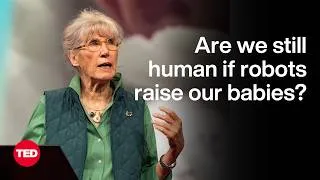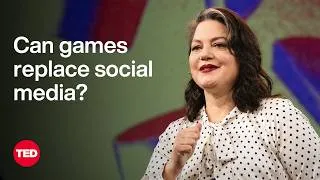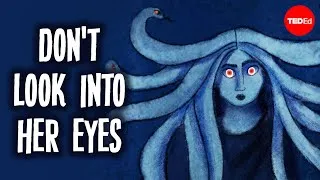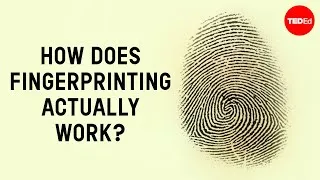请双击下面的英文字幕来播放视频。
翻译人员: Claire Zhang
校对人员: YUCHEN QIN
00:06
What if you could absorb
another organism
0
6834
2955
如果你能吸收吞并其他生物
00:09
and take on its abilities?
1
9789
2028
然后因此得到它所具有的能力,这听起来怎么样?
00:11
Imagine you swallowed a small bird
and suddenly gained the ability to fly.
2
11817
5103
想像你吞下一只小鸟,并突然得到飞的能力。
00:16
Or if you engulfed a cobra
3
16920
1964
或者你吞下一条眼镜蛇
00:18
and were then able to spit poisonous venom
from your teeth.
4
18884
4560
就能够吐出毒液。
00:23
Throughout the history of life,
5
23444
1733
在生命的历史中,
00:25
specifically during the evolution
of complex eukaryotic cells,
6
25177
4727
特别是复杂真核细胞的演化
00:29
things like this happened all the time.
7
29904
3306
像这样的事情是经常发生的。
00:33
One organism absorbed another,
8
33210
2667
一个有机体吞没另一个
00:35
and they united to become a new organism
with the combined abilities of both.
9
35877
6524
它们合而为一,成为一个全新并有组合能力的新有机体
00:42
We think that around 2 billion years ago,
10
42401
2413
想想20亿年前
00:44
the only living organisms on Earth
were prokaryotes,
11
44814
4146
地球上唯一存在的有机体是原核生物
00:48
single-celled organisms
lacking membrane-bound organelles.
12
48960
5556
这是一种没有膜结合细胞器的单细胞生物。
00:54
Let's look closely at just three of them.
13
54516
2795
让我们仔细看看其中三种
00:57
One was a big, simple blob-like cell
14
57311
3348
一种是巨大,简单的点状细胞
01:00
with the ability to absorb things
by wrapping its cell membrane around them.
15
60659
5527
它们能够把其他有机体包在其细胞膜内
01:06
Another was a bacterial cell
16
66186
1675
另一种是细菌。
01:07
that converted solar energy into sugar
molecules through photosynthesis.
17
67861
5900
它能透过光合作用将太阳能转化为糖类
01:13
A third used oxygen gas to break down
materials like sugar
18
73761
4824
第三种则是利用氧气将糖类等物质分解
01:18
and release its energy into a form useful
for life activities.
19
78585
5145
并将一些有助生物活动的能量释放出去
01:23
The blob cells would occasionally absorb
the little photosynthetic bacteria.
20
83730
5677
这些细胞有时也会吞噬小的光合细菌
01:29
These bacteria then lived inside the blob
and divided like they always had,
21
89407
5142
这些细菌在细胞内不断分裂
01:34
but their existence became linked.
22
94549
3145
然而它们的存在被连结在一起
01:37
If you stumbled upon
this living arrangement,
23
97694
2287
如果你碰巧遇到它,
01:39
you might just think that the whole thing
was one organism,
24
99981
3143
你可能以为它只是一个有机体
01:43
that the green photosynthetic bacteria
were just a part of the blob
25
103124
4337
以为这些绿色的光合细菌只是这巨大细胞的一部分
01:47
that performed one of its life functions,
26
107461
2700
以为它要执行生命机能
01:50
just like your heart is a part of you
27
110161
2028
就好像你的心脏也是你的一部分
01:52
that performs the function
of pumping your blood.
28
112189
3993
它将血液运送到全身
01:56
This process of cells living together
is called endosymbiosis,
29
116182
4679
这种细胞共存的过程,我们称之为内共生
02:00
one organism living inside another.
30
120861
3378
也就是一个有机体住在另一个有机体内
02:04
But the endosymbiosis didn't stop there.
31
124239
2756
但共生一事不仅于此
02:06
What would happen
if the other bacteria moved in, too?
32
126995
3698
如果其他细胞也搬进来了会怎样呢?
02:10
Now the cells of this species started
becoming highly complex.
33
130693
4302
那么,这样的细胞开始变得极为复杂
02:14
They were big and full
of intricate structures
34
134995
2189
它们变大,且变得充满复杂的结构
02:17
that we call chloroplasts
and mitochondria.
35
137184
4304
我们称这些为叶绿体和线粒体
02:21
These structures work together
to harness sunlight,
36
141488
2668
这些结构能一起利用阳光
02:24
make sugar,
37
144156
990
制造出糖分
02:25
and break down that sugar using the oxygen
38
145146
2827
并且利用氧气分解糖分
02:27
that right around this time started
to appear in the Earth's atmosphere.
39
147973
4728
这时也是氧气开始出现在大气层的时候
02:32
Organisms absorbing other organisms
40
152701
2115
有机体吸收其他有机体
02:34
was one way species adapted
to the changing environmental conditions
41
154816
4377
是一种生物进行适应
02:39
of their surroundings.
42
159193
2276
周遭环境变化的方式
02:41
This little story highlights what
biologists call the endosymbiotic theory,
43
161469
4472
这个小故事总结了生物学家的内共生理论
02:45
the current best explanation
of how complex cells evolved.
44
165941
4921
此为目前针对复杂细胞如何演化最好的解释
02:50
There's a lot of evidence
that supports this theory,
45
170862
2496
有很多证据支持此理论
02:53
but let's look at three main pieces.
46
173358
2606
但是让我们先看三个主要部分
02:55
First, the chloroplasts and mitochondria
in our cells multiply the very same way
47
175964
5272
首先, 在我们的细胞内,叶绿体和线粒体
以非常相同的方式繁殖
03:01
as those ancient bacteria,
48
181236
2123
就像古代的细菌。
03:03
which are still around, by the way.
49
183359
1956
顺道一提它们现在依然存在。
03:05
In fact, if you destroy these structures
in a cell, no new ones will appear.
50
185315
5144
事实上,你若把一个细胞内的这些结构破坏了,细胞并不会产生新的结构。
03:10
The cell can't make them.
51
190459
1867
它们并不能制造这些结构
03:12
They can only make more of themselves.
52
192326
2818
这些细胞只能繁殖。
03:15
Second piece of evidence.
53
195144
1509
第二个证据是
03:16
Chloroplasts and mitochondria both contain
their own DNA and ribosomes.
54
196653
5982
叶绿体和线粒体都有自己的DNA和核糖体
03:22
Their DNA has a circular structure
55
202635
2090
它们的DNA都有环状结构。
03:24
that is strikingly similar to the DNA
of the ancient bacteria,
56
204725
4044
这些结构和古老细菌的DNA有着明显的相似
03:28
and it also contains many similar genes.
57
208769
3082
并且也包含很多相似的基因
03:31
The ribosomes, or protein assembly
machines of chloroplasts and mitochondria,
58
211851
4858
核糖体,叶绿体和线粒体的蛋白质组成机器,
03:36
also have the same structure as ribosomes
of ancient bacteria,
59
216709
4355
也和古代细菌的核糖体有类似的结构
03:41
but are different from the ribosomes
60
221064
1753
但是它们和在细胞的其他地方的
03:42
hanging around
the rest of eukaryotic cell.
61
222817
3656
核糖体不同。
03:46
Lastly, think about the membranes involved
in the engulfing process.
62
226473
4337
最后,想想在这吞噬过程中的细胞膜。
03:50
Chloroplasts and mitochondria
both have two membranes surrounding them,
63
230810
4921
叶绿体和粒线体两者都有两个细胞膜包围
03:55
an inner and outer membrane.
64
235731
2762
一个是内部细胞膜,一个是外部细胞膜
03:58
Their inner membrane contains
some particular lipids and proteins
65
238493
3283
内部细胞膜含有特别的脂质和蛋白质
04:01
that are not present
in the outer membrane.
66
241776
3143
这些并不存在外部细胞膜中
04:04
Why is that significant?
67
244919
1609
为什么那么重要呢?
04:06
Because their outer membrane
used to belong to the blob cell.
68
246528
3822
因为它们的外部细胞膜曾经属于巨大细胞
04:10
When they were engulfed
in the endosymbiosis process,
69
250350
2862
当它们在共生过程中被吞没时
04:13
they got wrapped up in that membrane
and kept their own as their inner one.
70
253212
5206
它们被包在系统膜内,并被保留在它们内部
04:18
Surely enough, those same lipids
71
258418
1811
能够确定的是,相同的脂质和蛋白质
04:20
and proteins are found on the membranes
of the ancient bacteria.
72
260229
5134
也在古代的细菌细胞膜中被找到
04:25
Biologists now use this theory
73
265363
1900
生物学家用这个理论
04:27
to explain the origin of the vast
variety of eukaryotic organisms.
74
267263
5079
去解释了很多真核有机体的起源
04:32
Take the green algae that grow on
the walls of swimming pools.
75
272342
3854
比如说长在游泳池墙上的绿藻
04:36
A larger eukaryotic cell with spinning
tail structures, or flagella,
76
276196
5142
有旋转尾部结构或鞭毛的巨大有核系统
04:41
at some point absorbed algae like these
to form what we now call euglena.
77
281338
6176
吸收了绿藻,形成我们现在所谓的绿虫藻
04:47
Euglena can perform photosynthesis,
78
287514
2173
绿虫藻可以进行光合作用
04:49
break down sugar using oxygen,
79
289687
2092
利用氧气分解糖
04:51
and swim around pond water.
80
291779
2665
并能在池塘上游泳
04:54
And as the theory would predict,
81
294444
1758
用这理论推测,
04:56
the chloroplasts in these euglena
have three membranes
82
296202
3643
这个绿虫藻中的叶绿体有三个细胞膜
04:59
since they had two before being engulfed.
83
299845
4209
因为在它们被吞没前已经有两个
05:04
The absorbing process
of endosymbiotic theory
84
304054
2635
这个共生的吸收过程
05:06
allowed organisms to combine
powerful abilities
85
306689
3082
让有机体组合有用的能力
05:09
to become better adapted to life on Earth.
86
309771
3275
使它们能更加适应地球生活
05:13
The results were species
capable of much more
87
313046
2771
结果是生物的种类能够
05:15
than when they were separate organisms,
88
315817
2435
比它们是独立个体时还要多
05:18
and this was an evolutionary leap
89
318252
1964
这是演化的大跃进
05:20
that lead to the microorganisms, plants,
90
320216
2437
所以现今,我们现在地球上能够看到
05:22
and animals we observe
on the planet today.
91
322653
3486
微生物、植物以及动物。
New videos
关于本网站
这个网站将向你介绍对学习英语有用的YouTube视频。你将看到来自世界各地的一流教师教授的英语课程。双击每个视频页面上显示的英文字幕,即可从那里播放视频。字幕会随着视频的播放而同步滚动。如果你有任何意见或要求,请使用此联系表与我们联系。







